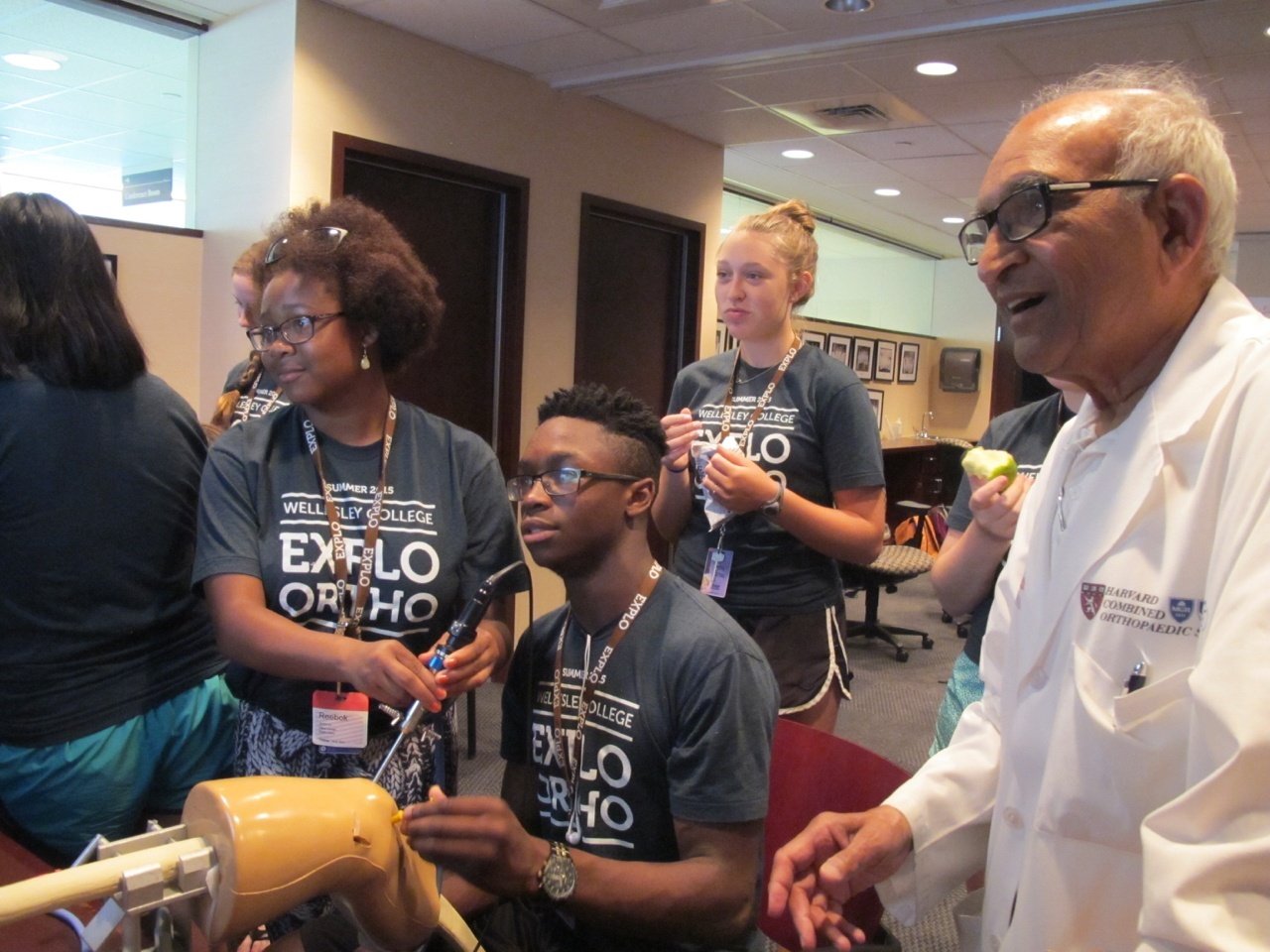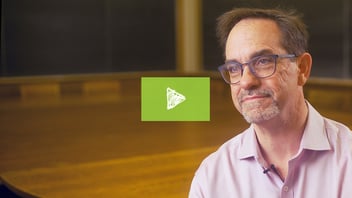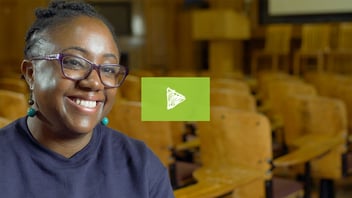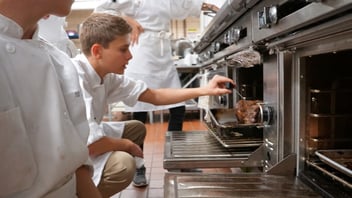Art of the Arthroscope: Dr. Dinesh Patel

In the Dr. Dinesh Patel Arthroscopic Learning Lab at Massachusetts General Hospital, EXPLO Orthopedics + Sports Medicine students don't just observe how a knee surgery works. They pick up the instruments — and dive in.
“It’s floating away,” Dr. Dinesh Patel tells a student called Matt. “The particle is floating away like a mouse in the house. Once you grab it, make sure when you pull the particle out of the knee that it doesn’t run away from you.”
Matt is standing at one of three practice knees, trying his hand at clearing out the debris tucked into crevices between the practice knee’s cartilage and bone. Only, he’s not looking inside the knee to monitor his progress. He’s looking at a TV. Matt and his colleagues are in Dr. Patel's world-class laboratory testing their hand-eye coordination on equipment normally reserved for surgeons completing their residency.
“The idea here is very simple,” Dr. Patel, a trailblazing orthopedist who takes time each year to work with EXPLO, tells the gathered students. “It’s called hand-eye coordination. And for any of you who have experience playing video games, the concept is exactly the same.”
I really enjoy working with these students for their youth, their passion, and their desire to take advantage of what EXPLO provides them. The work they are doing really unearths their inner spirit. When they finish the work you can see the satisfaction and it energizes them to perhaps pursue a career in orthopedics.
With just two incisions no bigger than a fingernail, an arthroscope and a pair of arthroscopic scissors, an orthopedic surgeon can repair a knee in under half an hour (depending on the injury, or course). But as Dr. Patel tells everyone, getting down to that half-hour takes a lot of practice.
So practice they do. Holding an arthroscope (a thin, long fiber optic scope) in one hand and a pair of arthroscopic scissors in the other, each student attempts to find the perfect angle. They’re hoping to both see the inside of the knee (the scope’s function) and clamp down on those wayward particles — a practice every surgeon must do as they clear and prep the area for surgery. It’s a triangulation technique that takes some practice, but as students get the hang of it, their pile of retrieved particles — each a piece of yellow paper no bigger than a millimeter squared — continues to grow.
Noticing how adept they’re becoming, Dr. Patel decides to up the ante and drops a paper clip in one knee and a screw in another. Ryan is the first student to successfully extract the paperclip from the knee, and Pavit is the second, meaning that the retrieval process might not be as difficult as it looks.
“I just want to open up the knee and see everything,” Olivia, a student, says.
“No,” Dr. Patel replies. “That’s wrong thinking. You actually see less when you open up the knee all the way, because with the scope you can see the inside of the knee from all angles.”
The scope, Dr. Patel explains, is oblique at the tip with a 20-degree angle, so by rotating it inside the knee, you can get a 360-degree view of the knee’s internal workings. And once you’re able to find your focal point inside the knee, you don’t move the scope.
The idea here is very simple. It’s called hand-eye coordination. And for any of you who have experience playing video games, the concept is exactly the same.
“That’s the moment when you start using the instruments to capture the loose particles,” Dr. Patel says. “But go slowly and keep a steady hand. You don’t want to drop the particle at the last moment, or have it get stuck in the body.”
For Matt, it’s all about figuring out where everything is, and how to read it on the screen. Once he has that down, coordinating how to retrieve each particle becomes that much easier. “It’s definitely challenging,” Matt says, “but it’s awesome how we get to try out equipment that’s being used in the best operating rooms in the country. We can really see what it’s like to actually be a surgeon.”



